Traveling with a bike is a logistical challenge us cyclists face at some point, whether it’s for racing, training camps, a long weekend abroad, or a bucket list ride in a faraway destination. And while booking flights, packing ride snacks, and choosing holiday kit is all part of the fun, there is one headache to it all: how do you actually get your bike there?
In this edition of Collective Favourites, we’re unpacking the bags that take your bike on tour. We asked our tech and editorial team to share what they use and trust, and – as always – turned to you, our members, to hear what’s kept your bikes safe in the cargo holds, train racks, and taxi boots.
Types of bike bags – pros and cons
From rigid, protective hard cases to lightweight soft shells, and even the humble cardboard box, there’s no single correct way to transport your bike abroad. The bag choice depends on how often you travel, what you ride, how protective about your bike you are, and how confident you are in your own bike-building skills.
There’s a surprisingly wide range of bike travel bags out there, but they can generally be split into the following categories.
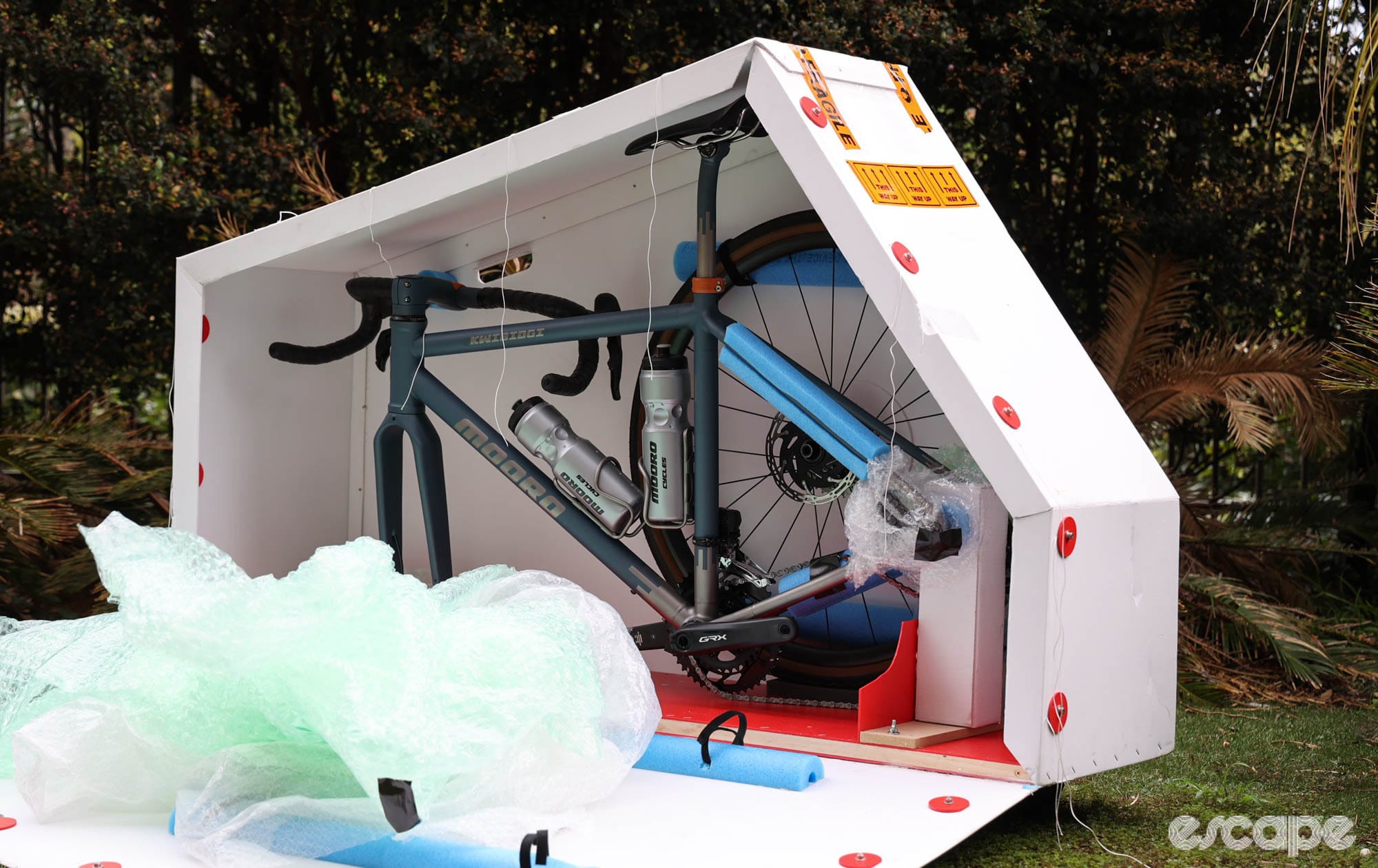
Hard cases
These offer the most protection – they're typically made from tough ABS plastic shells and are designed to cradle your bike securely. They’re ideal for peace of mind, but tend to be heavier, bulkier, and harder to store. Airlines charge oversize and, sometimes, overweight fees, so costs can quickly add up when you combine the weight of a case and the bike in it. Most also require more space in transport and may be tricky to stow in small cars, on public transport and in your own apartment.
- Pros: Maximum protection, less reliant on careful packing.
- Cons: Heavy, unwieldy, non-collapsible, expensive.
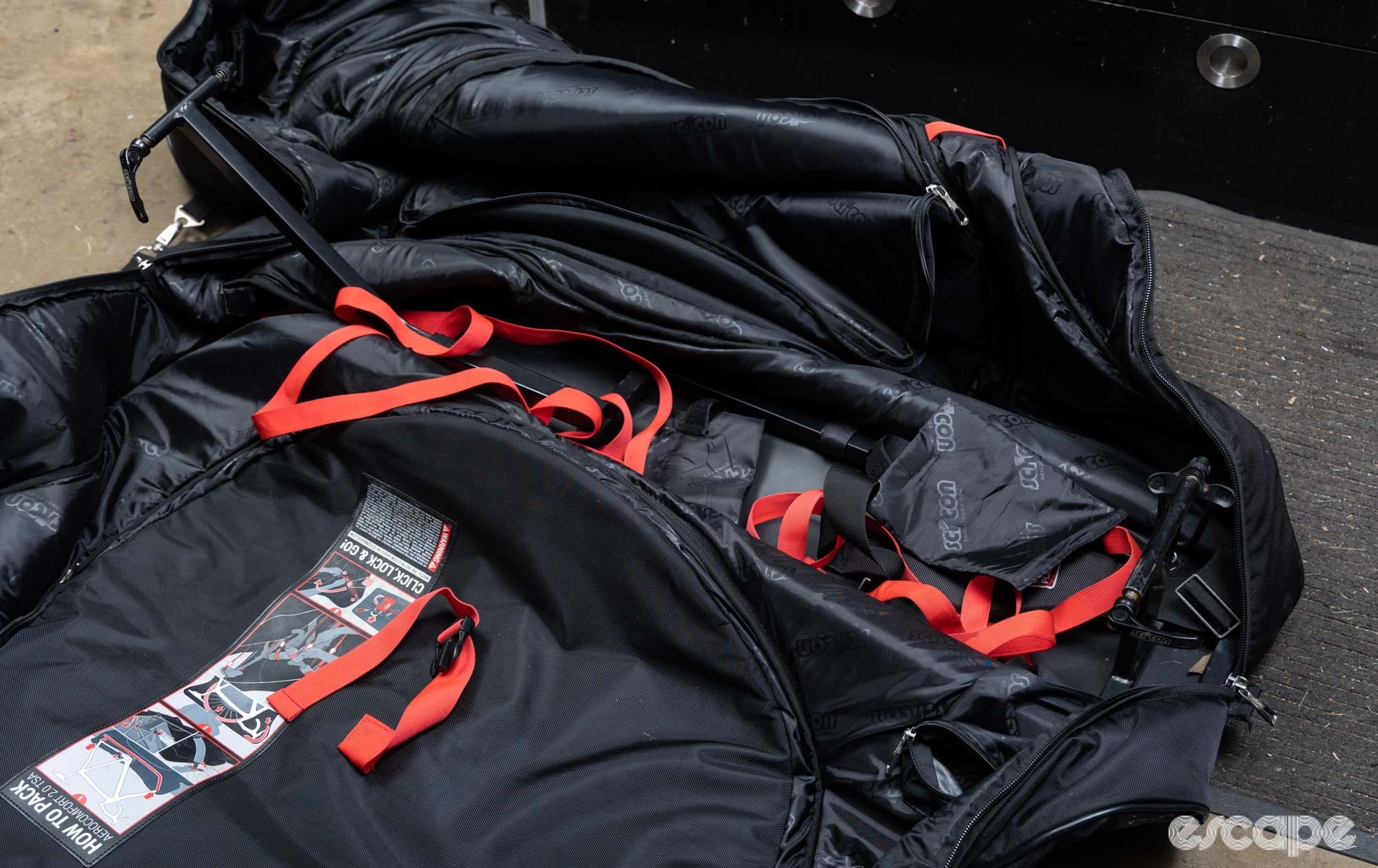
Soft cases
Usually made of padded fabric and lighter materials, soft bags are easier to carry, easier to store as they fold down, and often a bit more forgiving. They usually require more careful packing and may not stand up to as much abuse in transit, though modern models with internal support frames can be impressively secure.
- Pros: Lighter, more compact, easier to store.
- Cons: Less protection, more dependent on your packing skills.
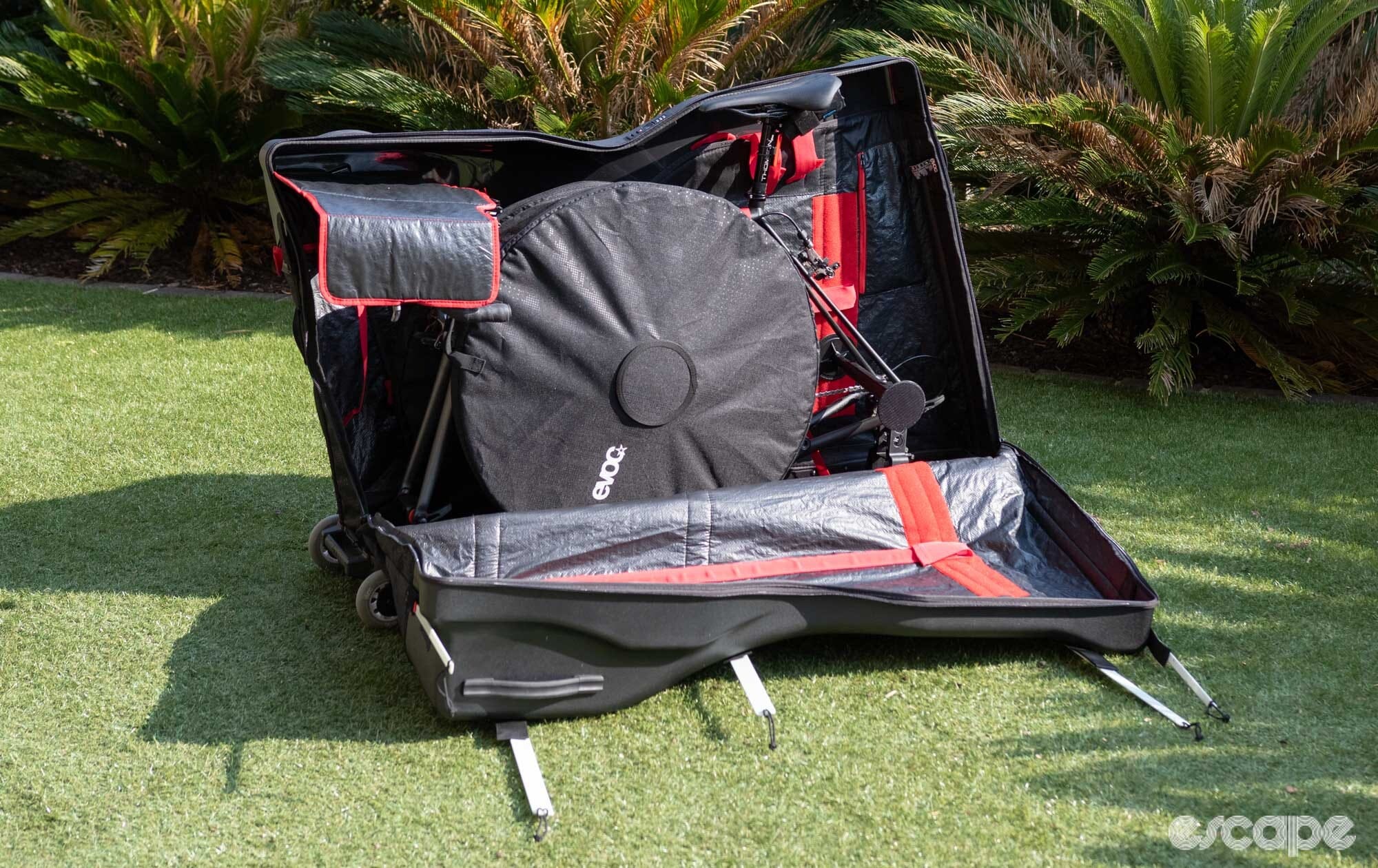
Hybrid cases
Blending the two above categories, hybrid cases use a combination of rigid panels and soft material. These are becoming increasingly popular for offering a balance of protection and portability.
- Pros: Best of both worlds – protection and packability.
- Cons: Usually still require moderate disassembly, and are not as light as soft bags.
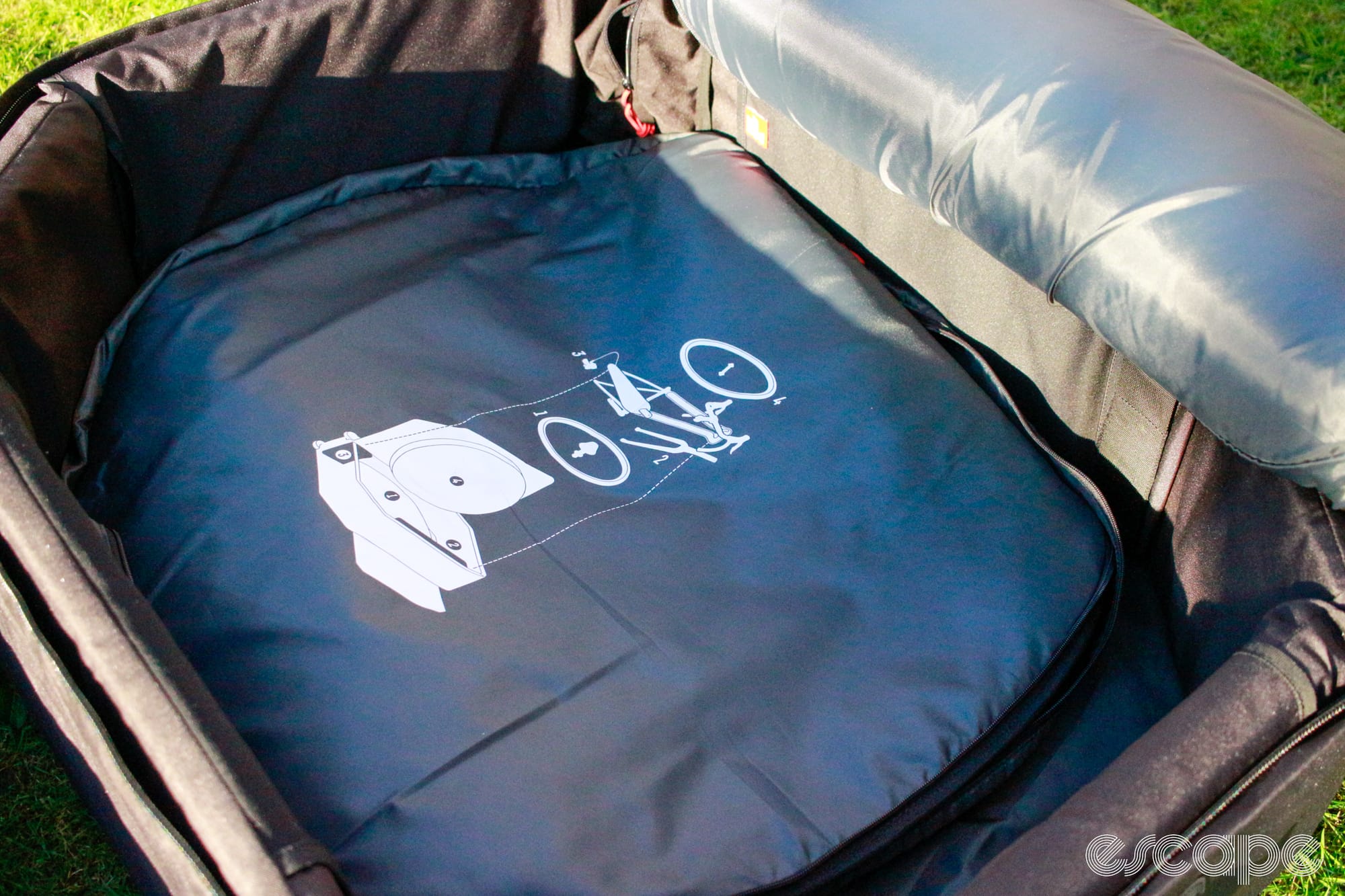
Minimalist/compact cases
These are designed to sneak under airline size limits, these bags (like the Ritchey Breakaway, Orucase B2 and Post Carry Co. Transfer Case) typically demand more bike disassembly but save you money on fees.
- Pros: Airline-friendly sizing, low weight, easier to travel with.
- Cons: Require extensive disassembly and higher mechanical confidence, might not be suitable for larger frames and tyres.
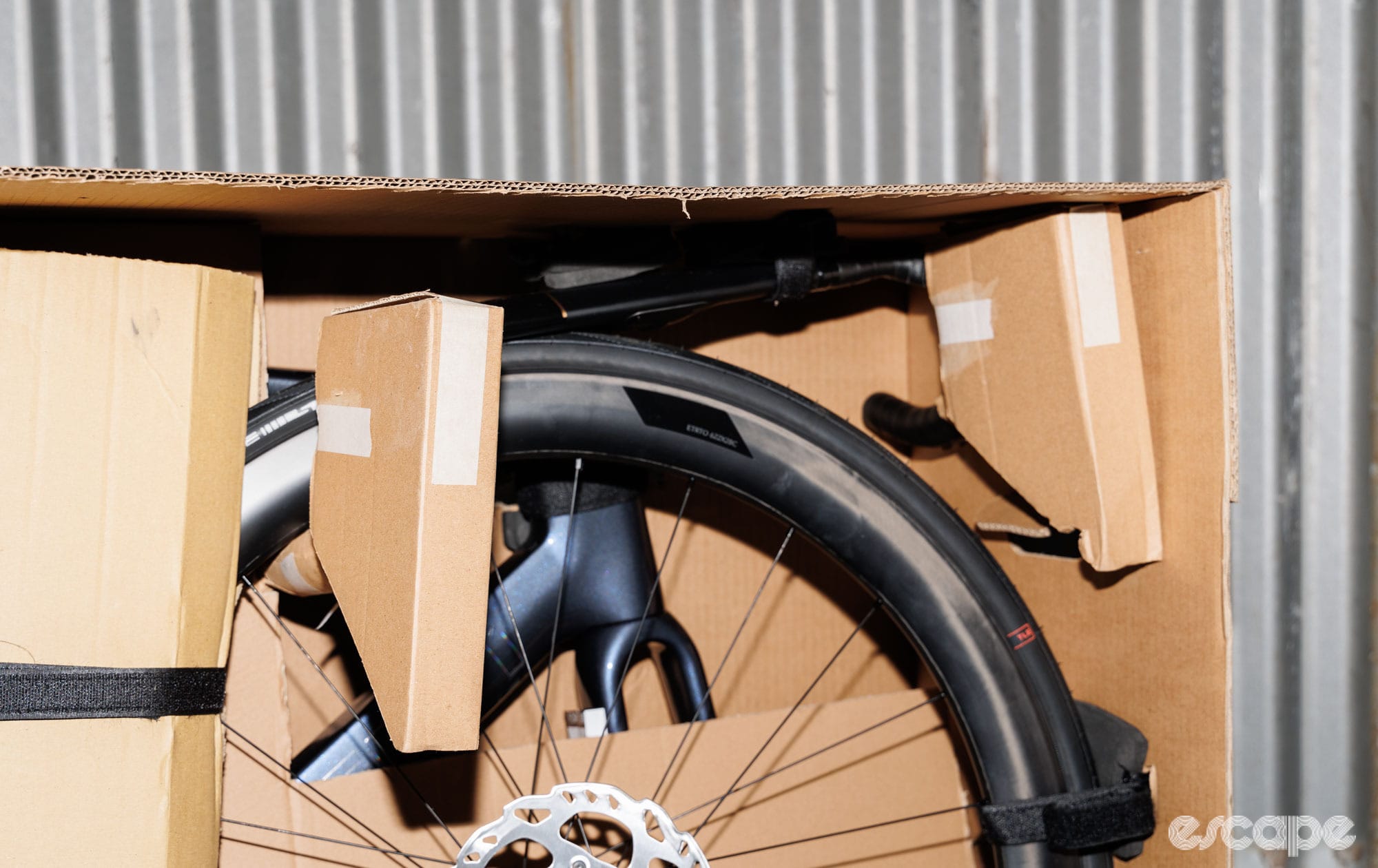
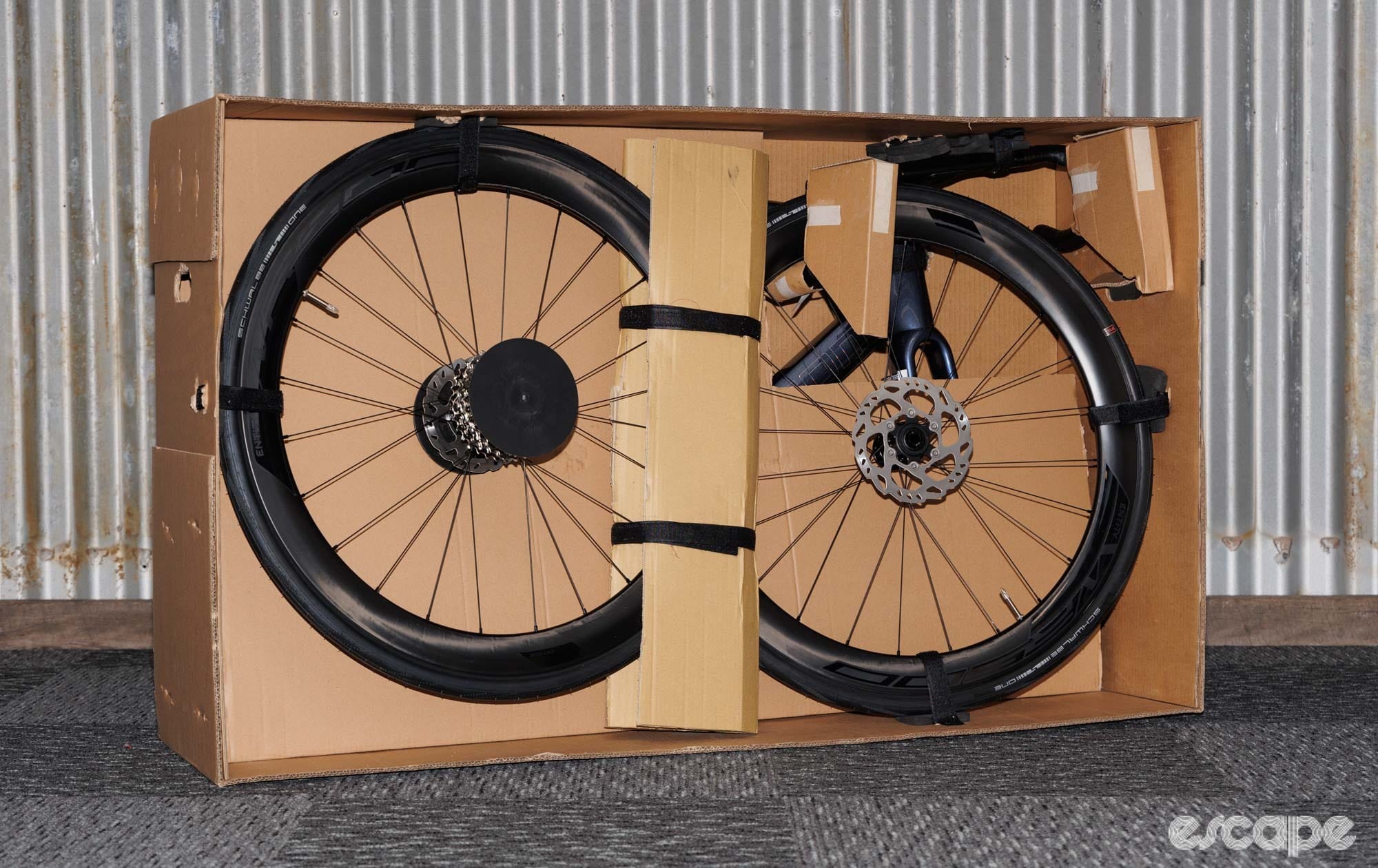
Cardboard boxes
They may not be glamorous, but cardboard bike boxes are still a solid option for one-off trips or budget flyers. You can often get them for free from a local shop, and they’re easy to dispose of at your destination.
- Pros: Cheap or free, easy to find.
- Cons: Bulky, no wheels, cumbersome to carry, short lifespan, little protection if not packed well.
When choosing between the above options, the key things to consider are the protection, your bike type, your mechanics skills, and your strength.
What to consider when choosing a bike bag?
When you're trying to choose between the above options, a few things can help you pick the best option for your needs.
Protection: If you've invested your hard-earned money in a nice bike with expensive components, you don't want to arrive at your winter getaway with the bike scratched, damaged or, in the worst case, broken.
Hard shell cases are the standard for anyone prioritising peace of mind above all else. They’re bulky, yes, but they’re bombproof against the rough treatment they might experience by the luggage handlers.
Soft bags can be surprisingly protective when well packed and padded – and they’re often lighter, easier to store, and also easier to maneuver when you’re trying to Tetris them into a car boot or oversized baggage belt.
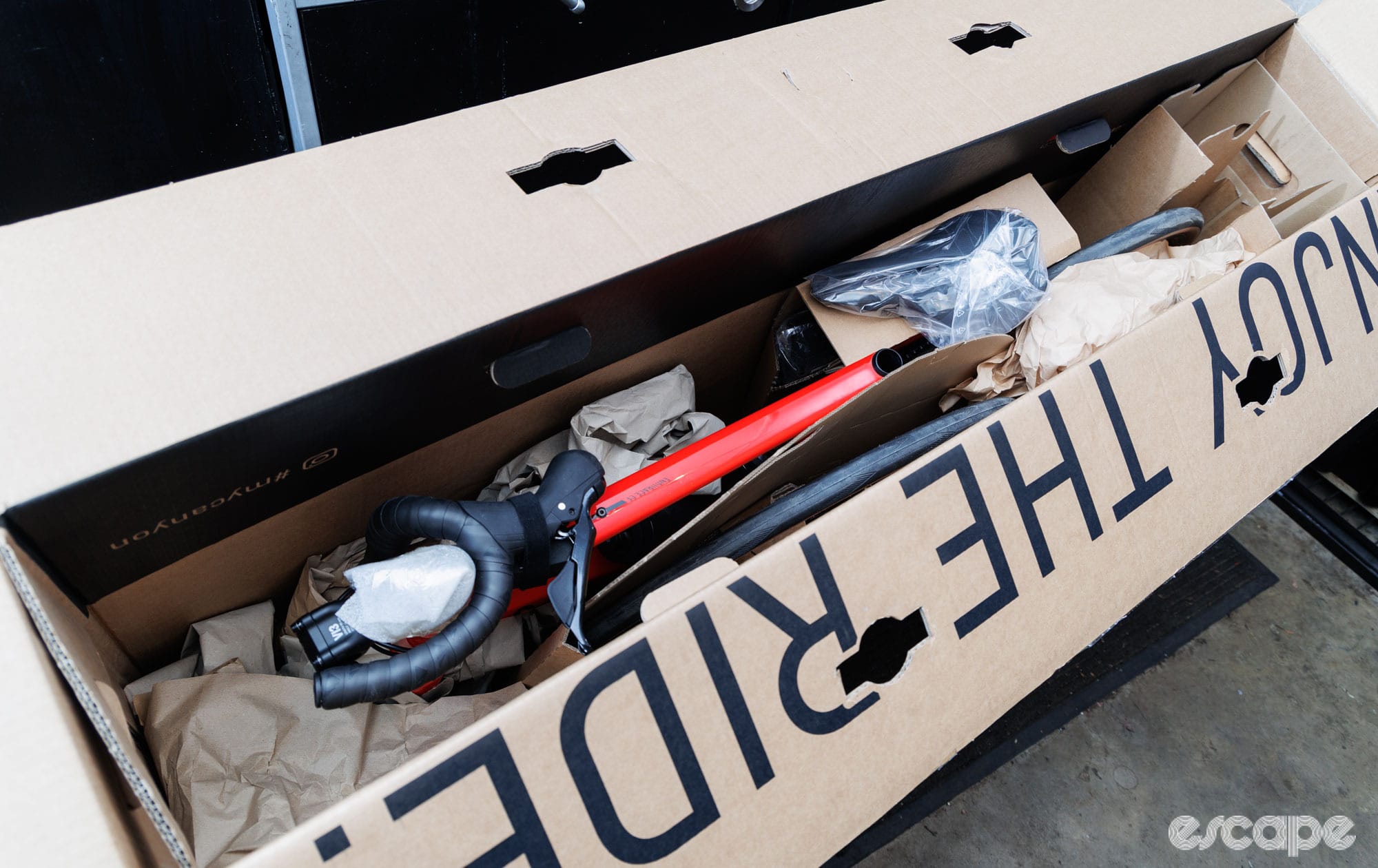
Ease of packing: Some bike bags require more extensive disassembly of your bike – that means both wheels off, derailleur off, handlebars and seatpost out. Others let you leave most of it in place. If you’re packing and unpacking frequently, this becomes a major factor.
It'a also worth noting that the way the bags allow you to organise the bike, wheels and other belongings inside varies vastly between different brands. Some have a host of small pockets for different bits, others rock just one simple, large compartment.
Cable integration and bike size: Many, if not most, modern road and gravel bikes come with full internally routed cables, which can make packing quite complicated. In the worst-case scenario, removing the handlebar or stem may mean disconnecting brake hoses or electronic wires, which is not ideal for travel.
If your bike has restrictive internal routing, double-check that the bag you’re eyeing can accommodate it without headaches. This likely means opting for a hard or hybrid case that has a wide section for the handlebar.
Beyond the integrated cables, another consideration is your bike size, or bike sizes if you own several that could be travel companions. A very large frame or a bike with chunky tyres can be a real struggle to fit into the most compact bike bags, whereas the smallest frames fit into nearly anything.
Also, a bike bag that fits your road bike like a glove might struggle with a long-wheelbase gravel rig or a full-suspension mountain bike. (If they're just a bit too big, full-suspension bikes can sometimes fit by emptying the positive air chamber on shocks and forks and compressing the suspension.) If you own multiple bikes you might travel with, it's worth making sure you choose something versatile enough to work across categories, or be ready to accept some compromises and more disassembling. Some cases allow for adjustable padding or extended baseplates to help fit different geometries.

Portability: Hard cases usually roll better and carry their weight more gracefully, so to speak, but they can be a nightmare to lift into a small hire car or manoeuvre up a hotel staircase. Some of them come with four wheels for this reason. But again, while the wheels make moving them around on smooth surfaces very easy, you might still need to carry the box up and down stairs and lift it onto cars, buses and trains. Due to the size and weight, this can really be at a limit of what one person can handle, so if you can, think about how feasible it is for you to actually lift and maneuver the bag or box of choice.
Generally, soft bags not only fold down for storage, but are also much easier to manage in tight spaces. The downside is that they can sag or shift depending on how well you pack them, and many come with only two wheels which can make rolling them around a literal balancing act.
Weight and size: This is very much linked to the above – the heavier and bigger your bike bag or box, the more you need to consider what you pack in it. Airline rules on luggage size, weight and allowances are famously inconsistent; some go by linear dimensions, some by weight, some by the mood of the airport staff.
Generally, a softcase bag gives you more room for gear and tools before hitting the baggage limit. That said, it’s always worth checking the current oversized baggage policy of the airline you’re using, as these change regularly and vary massively between different airlines around the world.
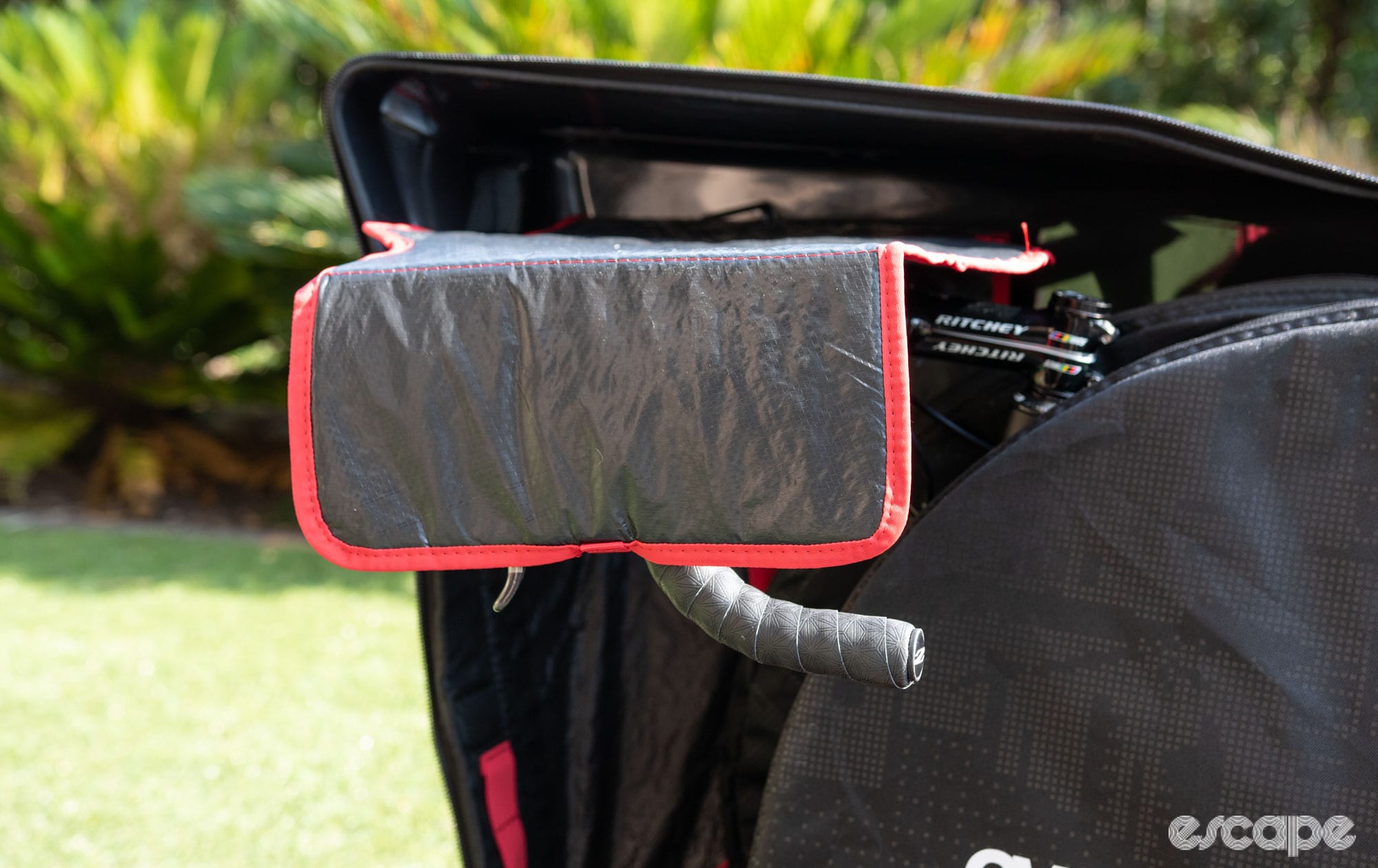
Batteries: Traveling with electronic groupsets isn't difficult, but an e-bike comes with added complications. Most airlines won’t allow large lithium-ion batteries in checked or carry-on luggage, so flying with an e-bike is nearly impossible, unless you find a way to either source another battery to use at the destination or ship your own another way.
Prepping and packing the bike: tips from the team
We've got a more in-depth feature about packing your bike on the way, so here is just a simple bullet-point list of the basics. It all gets easier with practice.
- Take photos and mark your setup (bar angle, lever position, saddle height) to help with reassembly.
- Protect key areas: wrap the derailleur, chainstay and derailleur hanger, fork tips and top tube with foam, pipe insulation, or other soft materials. If the case doesn't have a baseplate for the bike to attach to at the dropouts, you'll need protective dropout spacers at the fork and rear triangle to help protect against side loads.
- Deflate tyres slightly – some airlines require this – though they rarely check it. (This can also be useful for squeezing larger rubber into certain cases.)
- Use your kit strategically: stuff gloves and socks in shoes, and layer kit around frame tubes for extra padding. Be careful not to shove in so much that the case triggers overweight fees, which can be in addition to oversize charges.
- Pack tools for building the bike at the destination. Don't forget some spare rags and chain lube or drip wax, and your usual on-ride repair kit. Pack a minipump or electric inflator; CO2 cartridges are a no-go on planes. Going mountain biking? Pack a shock pump.
- Zip-tie small parts like thru axles, pedals and bolts and place them in zip-lock bags so they’re easy to find and don't stain or scratch other contents of your bag.
- Practice beforehand: The day of (or even night before) your trip is not the time to find out something doesn't work. A week beforehand, pack your bike, taking note of all tools needed, and troubleshoot for any potential issues, like areas that need more padding.
Do you even need a bike bag?
Before we get into the favourites, one more thing to emphasise: you don't need a bike bag. None of these bags are cheap, and it's worth considering if one is a worthwhile investment before splurging. If you travel regularly, a dedicated bike travel bag – hard or soft – can be a stress-reducing investment. It's one of those things that might only need to save your bike once to pay for itself.
On the flip side, if you only travel with your bike occasionally, buying a full travel case might feel like overkill, not to mention storage can be an issue if you live in a flat or share your space with other bikes and people.
If the above is true, cardboard bike boxes are a reliable, if short-lived, solution for the budget-conscious or one-off flyer. They're disposable and airline staff are familiar with them (just make sure to always insure your bike in case things go south).
And if you're limited in budget and storage space, many local bike shops offer bike boxes for hire, or if you know someone with a bag, maybe consider asking if they'd be willing to lend it to you for a little cost. Finally, there's always the option of bringing kit and simply renting a bike through a shop or touring company at your destination.
As a final note, and a sustainability angle, this feature is also not meant to encourage or indicate that you need to travel with your bike. There are plenty of great riding at our very own doorsteps, and we very much encourage you all to explore that as well, and not simply jetset around the world.
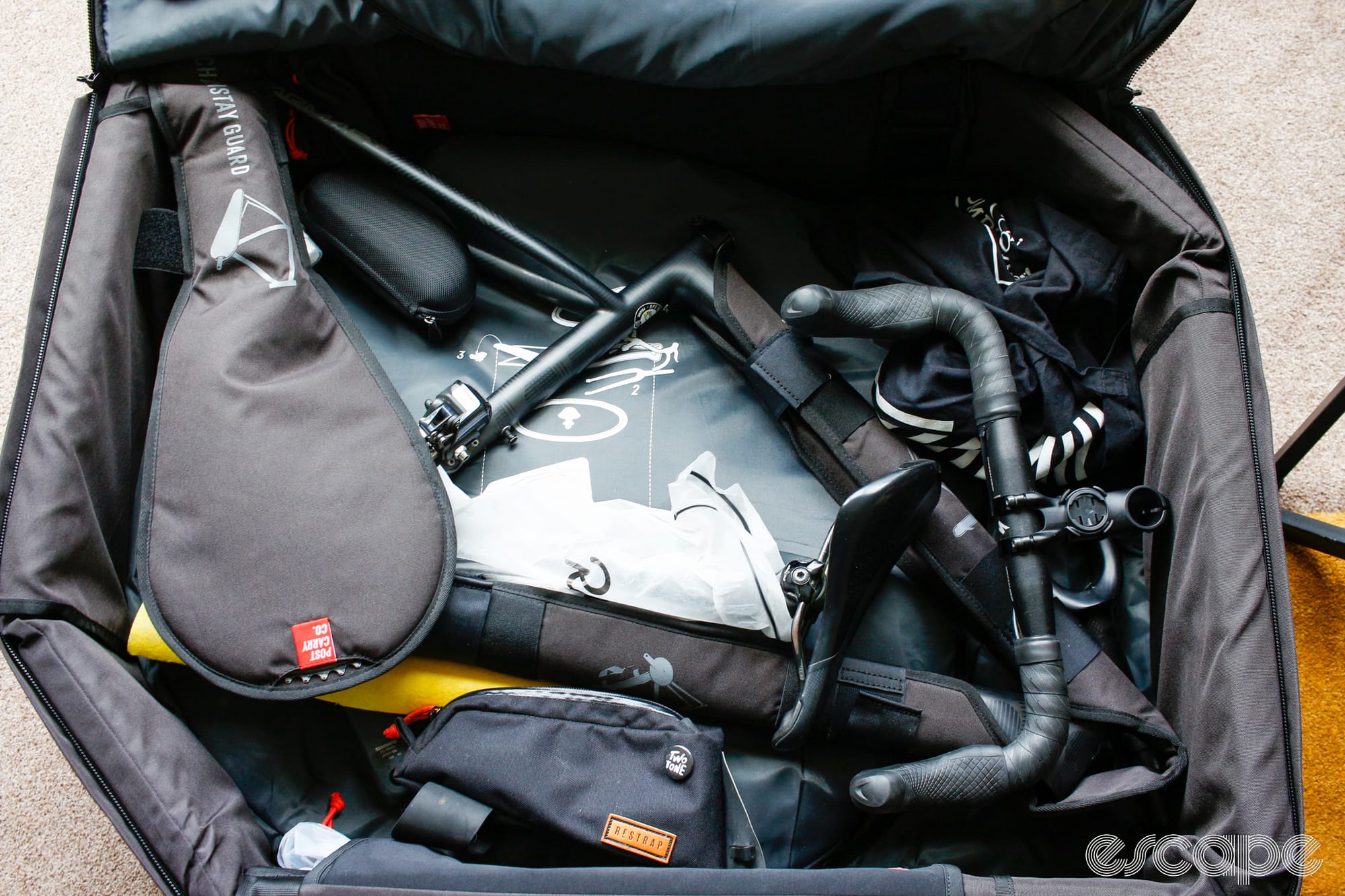
Staff and member picks
Did we do a good job with this story?





